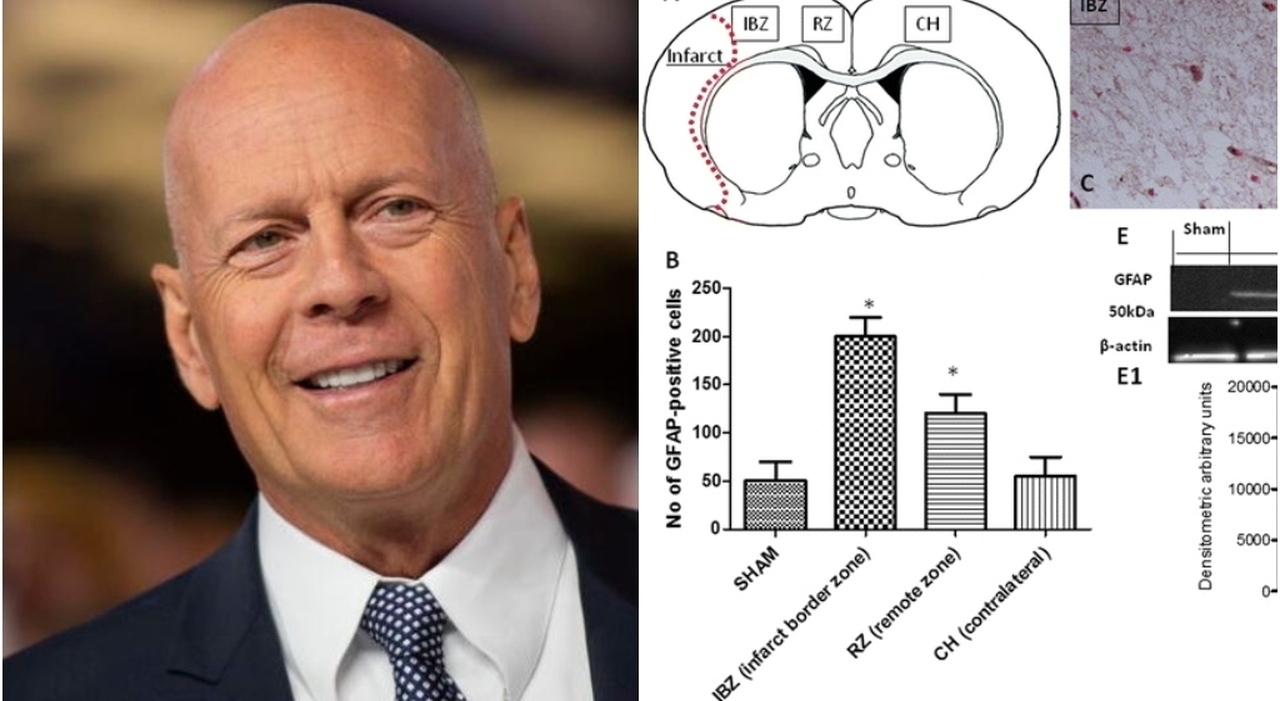Against the Frontotemporal dementia (FTD), a disease that also afflicts the American actor Bruce Willisa hope comes from one molecule which fights neuroinflammation (on top of it). This is highlighted by a study presented at the 25th Congress of the Italian Association of Psychogeriatrics (Aip) edited by Giacomo Koch, neurologist, full professor of physiology at the University of Ferrara and director of the Experimental Neuropsychophysiology Laboratory of the Santa Lucia Foundation.
Bruce Willis, his daughter Mabel turns 11: the photos, the party and the videos: so the actor smiles again
Symptoms
Frontotemporal dementia is a neurodegenerative disease that primarily affects the frontal and/or temporal lobes of the brain and is the most frequent cause of presenile onset neurodegenerative dementia. It is a heterogeneous disorder characterized by impairment of frontal executive functions, deficits in language or behavior and personality changes, and a severe decline in global functioning. “Currently, there is no specific effective pharmacological treatment to slow the progression of the disease and therapeutic strategies are mainly based on the use of symptomatic agents to control behavioral symptoms.
How the Pea molecule works
Recent findings support the idea that neuroinflammation is a key element in the pathogenic process of FTD starting from the early stages of the disease and it has been hypothesized that new drugs aimed at modulating brain neuroinflammation could potentially slow the progression of the disease,” Koch points out. The study, controlled against placebo, involved a sample of 50 patients suffering from frontotemporal dementia to evaluate the safety and efficacy of the administration of co-ultraPealut. “The clinical impact of the Pea molecule on the severity of the disease and the possible beneficial effects on cognitive deficits, behavioral symptoms, autonomy in daily life and the slowing down of the progression of functional decline were investigated – the expert explained – In addition, with a multimodal approach (cognitive and neurophysiological) the brain correlates associated with treatment with Pea-lut were investigated, thus making significant progress in understanding the pathophysiology of the disease”.
The results
The study had the aim of verifying on a large sample of patients whether the formulation of Palmitoyltanolamide (Pea) and the flavonoid antioxidant luteolin (Lut) subjected to an ultramicronization process could represent a potential therapeutic molecule in neurodegenerative disorders related to Ftd, for its documented anti-inflammatory and neuroprotective properties. «The clinical and neurophysiological data collected to date are very encouraging – said Koch – In another recent pilot study by our group published in 2020 we investigated the cognitive, behavioral and neurophysiological effects of a month of administration of coultrapea-lut at a dose oral dose of 700 mg twice daily in a sample of 17 patients with Ftd. From the analysis of the results it emerged that co-ultrapealut was able to improve frontal executive functions and neuropsychiatric disorders».
